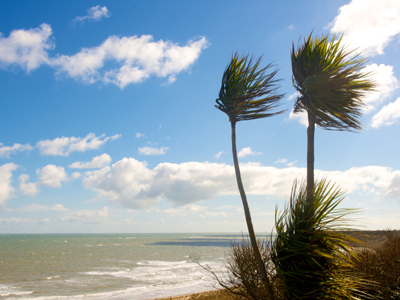
Ask the AI Tutor
Need help with Natural Hazards and Diseases 01? Ask our AI Tutor!
AI Tutor - Lucy
Connecting with Tutor...
Please wait while we establish connection

Test your geography skills in this quiz.
Natural Hazards and Diseases 01
Natural hazards can affect people’s lives all over the world, from powerful tropical storms and earthquakes to disease outbreaks that spread quickly through communities.
1 .
Which disease is not caused by drinking dirty water?
Cholera
Hepatitis
Typhoid
Yellow fever
This is a viral disease transmitted by mosquitoes
2 .
Which type of mosquito spreads malaria?
Female anopheles
Female mephistopheles
Male amorphous
Male anaphylactic
They breed in stagnant, still water - ditches, swamps etc.
3 .
Malaria and which other disease are caused by mosquitoes?
Enteritis
Sleeping sickness
Smallpox
Yellow fever
Sleeping sickness is carried by tsetse flies
4 .
What are tropical storms called in the region of the Pacific Ocean?
Chinooks
Dust devils
Tycoons
Typhoons
Most typhoons form between June and November
5 .
Which MEDC is not at risk from tropical storms?
Australia
Japan
Portugal
USA
In the Atlantic, tropical storms form mainly in the west over the Caribbean Sea
6 .
What is the calm centre of a hurricane called?
The core
The eye
The hub
The swirl
At the centre of the storm, cold air is descending and warming up so there are no clouds and very little wind
7 .
Tropical storms in the Caribbean have what name?
Cyclones
Hurricanes
Mistrals
Typhoons
They are called cyclones in the Indian Ocean
8 .
The HIV virus can lead to which disease?
AIDS
Bird flu
Mad cow disease
Scarlet fever
In Africa over 1 million people are infected with HIV every year
9 .
Beri beri and rickets are caused by lack of what?
Carbohydrates
Proteins
Starch
Vitamins
Beri beri is lack of vitamin B, rickets a lack of vitamin D
10 .
What is the common name for Bilharzia?
Black fever
Dengue fever
Snail fever
Swamp fever
Tropical snail larvae work their way into the body through the feet!
**Unlimited Quizzes Await You! 🚀**
Hey there, quiz champ! 🌟 You've already tackled today's free questions.
Ready for more?
Ready for more?
🔓 Unlock UNLIMITED Quizzes and challenge yourself every day. But that's
not all...
not all...
🔥 As a Subscriber you can join our thrilling "Daily Streak" against other
quizzers. Try to win a coveted spot on our Hall of Fame Page.
quizzers. Try to win a coveted spot on our Hall of Fame Page.
Don't miss out! Join us now and keep the fun rolling. 🎉
**Unlimited Quizzes Await You! 🚀**
Hey there, quiz champ! 🌟 You've already tackled today's free questions. Ready for more?
🔓 Unlock UNLIMITED Quizzes and challenge yourself every day. But that's not all...
🔥 As a Subscriber you can join our thrilling "Daily Streak" against other quizzers. Try to win a coveted spot on our Hall of Fame Page.
Don't miss out! Join us now and keep the fun rolling. 🎉






